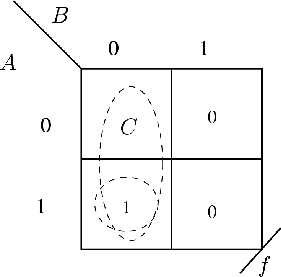 |
A generalization of the k-map method is to introduce variables into the k-map squares. These are called entered variable k-maps. This is useful for functions of large numbers of variabes, and can generally provide a clear way of representing Boolean functions.
An entered variable k-map is shown in Figure 168.
Note the variable C in the top left square. It corresponds to
Figure 169 shows another EV k-map,
with four entered variables C0, C1, C2, C3.
Each of these terms are different and must be looped out
individually to get
ANU Engineering - ENGN2211